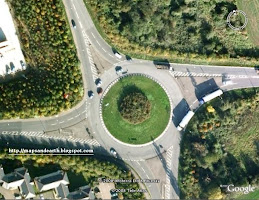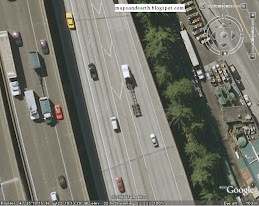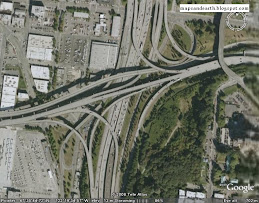
A Collection of B-25 Mitchell Bombers

 B-25 Mitchell Bombers in europe
B-25 Mitchell Bombers in europe B-25 Mitchell Bombers in australia
B-25 Mitchell Bombers in australia B-25 Mitchell Bombers in south america
B-25 Mitchell Bombers in south americaHistory: The B-25 was made immortal on April 18, 1942, when it became the
first United States aircraft to bomb the Japanese mainland. Commanded by
Lieutenant Colonel James Doolittle, sixteen Mitchells took off from the aircraft
carrier USS Hornet, flew 800 miles (1287 km) to Japan, and attacked their
targets. Most made forced landings in China. They were the heaviest aircraft at
the time to be flown from a ship at sea.The B-25 was designed for the United
States' Army Air Corps before the Second World War. The North American company
had never designed a multi-engine bomber before. The original design had
shoulder-mounted wings and a crew of three in a narrow fuselage. The USAAC then
decided its new bomber would need a much larger payload -- double the original
specifications. North American designers dropped the wing to the aircraft's
mid-section, and widened the fuselage so the pilot and co-pilot could sit
side-by-side. They also improved the cockpit. The USAAC ordered 140 aircraft of
the new design right off the drawing board. There were at least six major
variants of the Mitchell, from the initial B-25A and B-25B, with two
power-operated two-gun turrets, to the autopilot-equipped B-25C, and the B-25G
with 75mm cannon for use on anti-shipping missions. The British designated the
B-25Bs as the Mitchell I, the B-25C and B-25Ds as the Mitchell II, and their
B-25Js, with 12 heavy machineguns, as the Mitchell III. The US Navy and Marine
Corps designated their hard-nosed B-25Js as the PBJ-1J. In the end, the B-25
became the most widely used American medium bomber of World War Two.After the
war, many B-25s were used as training aircraft. Between 1951 and 1954, 157
Mitchells were converted as flying classrooms for teaching the Hughes E-1 and
E-5 fire control radar. They were also used as staff transport, utility, and
navigator-trainer aircraft. The last B-25, a VIP transport, was retired from the
USAF on May 21, 1960. Approximately 34 B-25 Mitchells remain flying today, most
as warbirds, although at least one earns its keep in Hollywood as an aerial
camera platform. [History by David
MacGillivray]
Nicknames: Billy's Bomber (after General Billy Mitchell);
Bank (NATO code name for Russian Lend-Lease B-25s).
Specifications
(B-25J):
Engines: Two 1,700-hp
Wright R-2600-92 Cyclone radial piston engines
Weight: Empty 19,480 lbs., Max Takeoff 35,000 lbs.
Wing Span: 67ft. 7in.
Length: 52ft. 11in.
Height: 16ft. 4in.
Performance:
Maximum Speed at 13,000 ft: 272mph
Ceiling: 24,200 ft.
Range: 1,350 miles
Armament: 12 12.7-mm (0.5-inch) machine guns
4,000 pounds of bombs
Number Built: 9,889
Number Still Airworthy:
~34
first United States aircraft to bomb the Japanese mainland. Commanded by
Lieutenant Colonel James Doolittle, sixteen Mitchells took off from the aircraft
carrier USS Hornet, flew 800 miles (1287 km) to Japan, and attacked their
targets. Most made forced landings in China. They were the heaviest aircraft at
the time to be flown from a ship at sea.The B-25 was designed for the United
States' Army Air Corps before the Second World War. The North American company
had never designed a multi-engine bomber before. The original design had
shoulder-mounted wings and a crew of three in a narrow fuselage. The USAAC then
decided its new bomber would need a much larger payload -- double the original
specifications. North American designers dropped the wing to the aircraft's
mid-section, and widened the fuselage so the pilot and co-pilot could sit
side-by-side. They also improved the cockpit. The USAAC ordered 140 aircraft of
the new design right off the drawing board. There were at least six major
variants of the Mitchell, from the initial B-25A and B-25B, with two
power-operated two-gun turrets, to the autopilot-equipped B-25C, and the B-25G
with 75mm cannon for use on anti-shipping missions. The British designated the
B-25Bs as the Mitchell I, the B-25C and B-25Ds as the Mitchell II, and their
B-25Js, with 12 heavy machineguns, as the Mitchell III. The US Navy and Marine
Corps designated their hard-nosed B-25Js as the PBJ-1J. In the end, the B-25
became the most widely used American medium bomber of World War Two.After the
war, many B-25s were used as training aircraft. Between 1951 and 1954, 157
Mitchells were converted as flying classrooms for teaching the Hughes E-1 and
E-5 fire control radar. They were also used as staff transport, utility, and
navigator-trainer aircraft. The last B-25, a VIP transport, was retired from the
USAF on May 21, 1960. Approximately 34 B-25 Mitchells remain flying today, most
as warbirds, although at least one earns its keep in Hollywood as an aerial
camera platform. [History by David
MacGillivray]
Nicknames: Billy's Bomber (after General Billy Mitchell);
Bank (NATO code name for Russian Lend-Lease B-25s).
Specifications
(B-25J):
Engines: Two 1,700-hp
Wright R-2600-92 Cyclone radial piston engines
Weight: Empty 19,480 lbs., Max Takeoff 35,000 lbs.
Wing Span: 67ft. 7in.
Length: 52ft. 11in.
Height: 16ft. 4in.
Performance:
Maximum Speed at 13,000 ft: 272mph
Ceiling: 24,200 ft.
Range: 1,350 miles
Armament: 12 12.7-mm (0.5-inch) machine guns
4,000 pounds of bombs
Number Built: 9,889
Number Still Airworthy:
~34
a kmz file of a collection of B-25 Mitchell Bombers show places of B-25 in Google earth
 View in Google Earth
View in Google Earth



















.jpg)
.jpg)
.jpg)
.jpg)


























